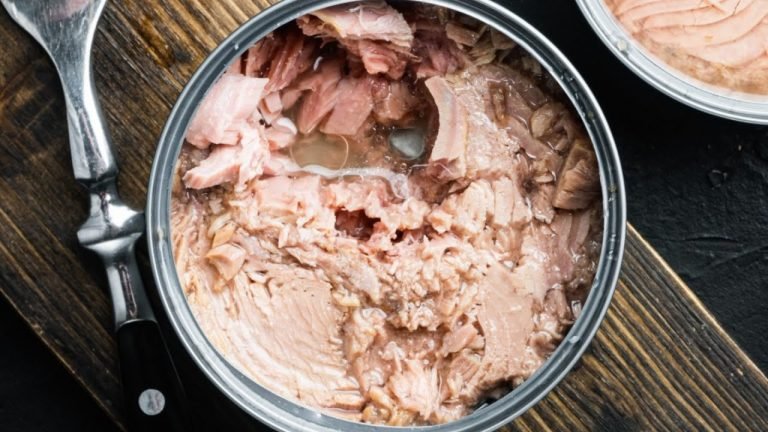Understanding the Ounces in a Can of Tuna

Are you curious about how many ounces are in a can of tuna? Whether you're trying to follow a recipe or just want to know how much tuna you're consuming, understanding the standard size of a can of tuna can be helpful. In this article, we'll break down the typical sizing of canned tuna and provide helpful tips on how to incorporate this versatile ingredient into your meals. Let's dive into the world of canned tuna and discover how many ounces are in a standard can!
What is the typical size of a can of tuna in ounces?
A typical can of tuna is 5 ounces, which is equivalent to 4 ounces of actual tuna and 1 ounce of water or oil. According to FDA guidelines, individuals can consume up to 12 ounces (3 servings) of light tuna or 4 ounces (1 serving) of albacore per week, assuming they eat no other fish. This information is important for those who are mindful of their fish consumption and want to ensure they are staying within recommended limits.
Is 7 oz of tuna too much?
Yes, 7 oz of tuna is too much for both children and adults. According to the FDA, children under 6 can only eat up to 3-ounces of canned white or albacore tuna a month, while adults can safely consume up to 6-ounce portions three times a month. Exceeding these recommended limits can lead to an unhealthy buildup of mercury in the body, which can have harmful effects on one's health.
It's important to be mindful of portion sizes when it comes to consuming tuna, as exceeding the recommended limits can have negative health implications. By following the FDA guidelines, both children and adults can enjoy the health benefits of tuna while minimizing the risks associated with mercury consumption.
Is it okay to have 2 cans of tuna a day?
Two cans of tuna a day can be a healthy addition to your diet. With its high omega-3 fatty acids content and lean protein, canned tuna is a convenient and affordable way to boost your daily nutrient intake. Plus, the mercury levels in canned tuna are very low, making it a safe choice for regular consumption.
According to Miller, there's no harm in incorporating two cans of tuna into your daily meals. Not only is it a cost-effective source of omega-3s, but it also provides a lean protein option. With its low mercury levels, canned tuna is a safe and accessible choice for those looking to increase their daily nutrient intake.
Decoding Tuna Can Labels: Unraveling the Ounce Mystery
Do you ever find yourself puzzled by the numbers and measurements on tuna can labels? You're not alone. Deciphering the ounce mystery can be a challenge, but with a little insight, it's easier than you think. Tuna can labels often display net weight in ounces, which refers to the weight of the tuna within the can, not including the water or oil it's packed in. Understanding this simple distinction can help you make more informed choices at the grocery store.
Next time you're browsing the canned tuna aisle, keep an eye out for the net weight in ounces on the labels. This number represents the actual weight of the tuna, and it's an important factor to consider when comparing different brands or varieties. Additionally, some labels may also include the drained weight, which indicates the weight of the tuna once the liquid has been drained. By paying attention to these measurements, you can ensure you're getting the most tuna for your money and making the best choice for your needs.
Armed with this knowledge, you can confidently navigate the tuna can labels and make informed decisions about your purchases. Understanding the ounce mystery is the key to choosing the right tuna for your recipes and meals. So next time you're shopping, take a closer look at those labels and unravel the mystery of tuna can ounces.
Demystifying Tuna Packaging: What You Need to Know about Ounces
When it comes to tuna packaging, understanding the ounces can make a big difference in your meal planning. Whether you're a fan of canned tuna or pouches, knowing how many ounces are in each package can help you accurately portion out your meals. With this knowledge, you can easily follow recipes that call for specific amounts of tuna, and make sure you have enough on hand for your favorite dishes.
When shopping for tuna, pay attention to the ounces listed on the packaging to ensure you're getting the right amount for your needs. Whether you're stocking up for a week of lunches or preparing a special dinner, knowing the ounces will help you make informed decisions about which package to choose. By demystifying tuna packaging and understanding the ounces, you can confidently select the right amount of tuna for your recipes and meal plans.
In summary, knowing how many ounces are in a can of tuna can make a big difference when following a recipe or managing portion sizes. With the standard size being 5 ounces, it's important to pay attention to labels and measurements to ensure you're getting the right amount for your needs. Whether you're making a salad, sandwich, or casserole, having the correct amount of tuna will help you achieve the perfect dish every time.
